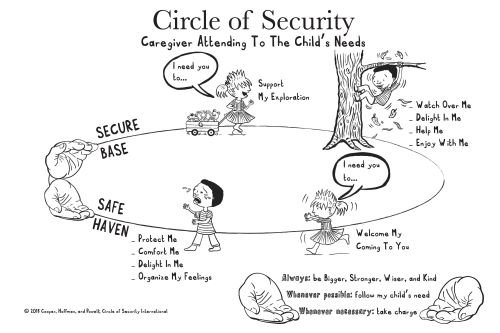
July 12, 2022
By: Stéphanie Correia, PhD Candidate, Therapist
Individuals seeking psychology services in regards to parenting may want to know what can be done to stop their child from behaving a certain way or from becoming emotionally dysregulated. A behavioural approach involving rewards and consequences may work for some time, but usually not for long. A more helpful approach may be to help parents to get curious about their relationship with their child and about what a child’s behaviour might be trying to communicate to them.
A child’s behaviour has meaning. Decoding children’s behaviour and responding to the underlying need is challenging for even the most sensitive and secure parent or primary caregiver. Indeed, parenting often involves a fair amount of trial and error through each developmental stage. Parents may feel confused or overwhelmed by their child’s cues, by popular parenting advice and by their experiences being parented. Based on decades of attachment research, The Circle of Security approach, developed by Powell, Cooper and Hoffman (2013), may serve as a roadmap for parents to better understand their child’s attachment needs.
As described by Powell, Cooper and Hoffman (2013), the Circle of Security can be broken down into three connected elements:
Secure attachment is nurtured when parents feel mostly comfortable meeting their child’s needs on both sides of the circle, in which case their child will feel mostly comfortable communicating their needs in a clear way. Parents may seek psychological support in order to better identify and work around personal factors that get in the way of attuning to their child’s need. For instance, parents may feel too anxious about supporting their child’s exploration or too overwhelmed to help their child regulate intense emotion. It is important to remember that children do not require a perfect parent! In fact, the authors suggest that accurately decoding and responding to a child’s attachment needs 30% of the time is “good enough”. All parents will unavoidably take their hands off the circle, misreading their child’s cues or even missing them altogether at times. Mistakes and ruptures provide invaluable opportunities to learn, repair and strengthen the parent-child relationship!
More information and Circle of Security resources can be found at circleofsecurityinternational.com.
Video animation is available here:
Coyne, J., Powell, B., Hoffman, K., & Cooper, G. (2019). The circle of security. Handbook of infant mental health (pp. 500-513).
Hoffman, K., Cooper, G., & Powell, B. (2017). Raising a secure child: how circle of security parenting can help you nurture your child’s attachment, emotional resilience, and freedom to explore. Guilford Publications.
Powell, B., Cooper, G., Hoffman, K., & Marvin, B. (2013). The circle of security intervention: Enhancing attachment in early parent-child relationships. Guilford publications.
https://connectepsychology.com/en/2015/12/08/helping-versus-hovering-if-you-want-to-be-a-better-parent-looks-like-its-time-to-back-off/
https://connectepsychology.com/en/2021/09/14/connecting-with-adolescents-a-guide-for-parents/
https://connectepsychology.com/en/2015/11/22/attachment-theory-whats-love-got-to-do-with-it/